When the Garden Started
By Tasha Graff ’07 for Bowdoin MagazineIT’S EASY TO MISS THE SPRINGWORKS FARM STAND IF YOU’RE NOT PAYING ATTENTION. Eleven miles northwest of Bowdoin’s campus on Route 196, you drift into the town of Lisbon against the current of the Androscoggin River, passing the high school, a supermarket, a gas station, and, in the summer, two rival ice cream shops: Smiley’s and Big Dipper.
I’m on my way to meet current Bowdoin student Trevor Kenkel ’18, founder and president of Springworks Farm, the largest aquaponics farm in New England and purveyor of organic lettuce for more than 130 different accounts, including Bowdoin, the University of Maine at Orono, Colby College, and thirty Hannaford supermarkets. This is no small feat for any Maine farmer, let alone one concurrently pursuing his undergraduate degree in biology and economics.
I make a quick U-turn after the Springworks logo flashes in my peripheral vision and pull into the dusty parking lot. The seasonal farm stand is unassuming. The crates outside are filled with organic produce with handwritten price tags, while inside a refrigerator brims with officially labeled Springworks lettuce: red romaine and bright green Bibb catch my eye.
An older man nods to me as he walks out, lifting his bag to show off his purchases. “This here’s the best lettuce I ever tasted,” he says, smiling as he heads to his car. I ask the woman behind the counter how I might find her boss, now that I’d met a walking advertisement. She laughs. “Trevor? Check the farmhouse, and if you can’t find him, walk down to the greenhouse.”
“Do unto those downstream as you would have those upstream do unto you.”
——Wendell Berry
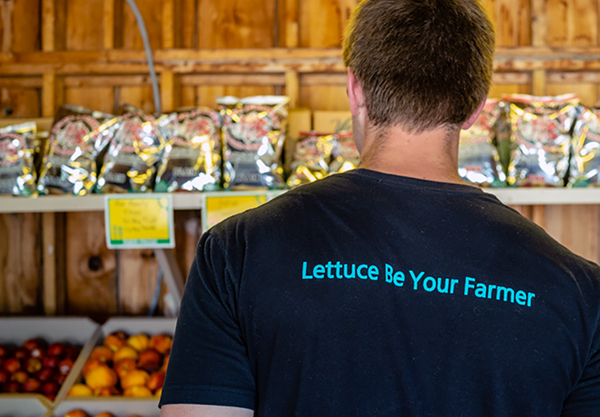
After knocking on several doors of the rambling white house and finding no one but an affable dog, I make my way down to the heart of Springworks Farm: a large structure that houses blue tanks the size of small swimming pools filled with tilapia, all attached to a 6,000-square-foot greenhouse where lettuce heads grow on rafts above water made nutrient-rich by the fish. I find Kenkel behind the fish barrels, and he welcomes me with a warm Bowdoin hello.
Kenkel’s aquaponics operation uses 90 percent less water than traditional farming to grow lettuce, raising tilapia and cultivating plants in a symbiotic relationship. “It’s an ecosystem, and we’re stewards of the water chemistry,” says Kenkel, as he takes me on a tour, greeting employees as we make our way around. “We spend a lot of time to make sure all the conditions are right for everything that’s living in the system, not just the lettuce and fish, but all of the small organisms that break things down and contribute to the diversity,” he says, putting on his sunglasses as we enter the bright greenhouse. The back of his black Springworks T-shirt reads “Lettuce be your farmer” in blue script.
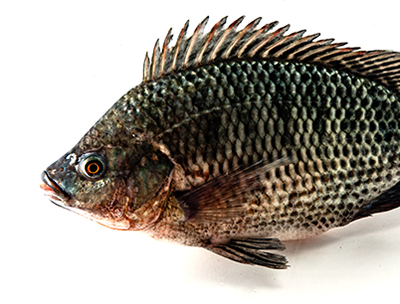
A Nile tilapia from Springworks Farm.
Tilapia are often used in aquaponics and the fish themselves are eventually harvested as part of the process. When the new greenhouse comes online, Springworks will produce twenty thousand pounds of fish a year for the Boston and Portland markets.
It takes forty days for Springworks to grow a head of lettuce. The aquaponic system allows Kenkel to farm year-round, despite Maine’s long winter. He sells about 6,000 pounds of fish per year to local markets. “It’s a highly sustainable model, and that’s what we aim for,” he says.
A native of Whitefish, Montana, Kenkel grew up in what he describes as a “kid’s paradise.” His dad taught him to fly-fish for trout, and from a young age, he would spend all the time he could outdoors, particularly in Haskill Creek, about a mile from his house.
He credits his time at the creek as the catalyst for his interest in sustainable agriculture. “I used to bike over and tromp around, do a little fishing, catch frogs, and all sorts of little kid stuff with my buddies,” he says. “A couple years after I started going there, the fish went away, and the frog population dropped, and the whole area lost biodiversity.” Kenkel wanted to know what was happening and started doing research to better understand his surroundings—he was eleven.
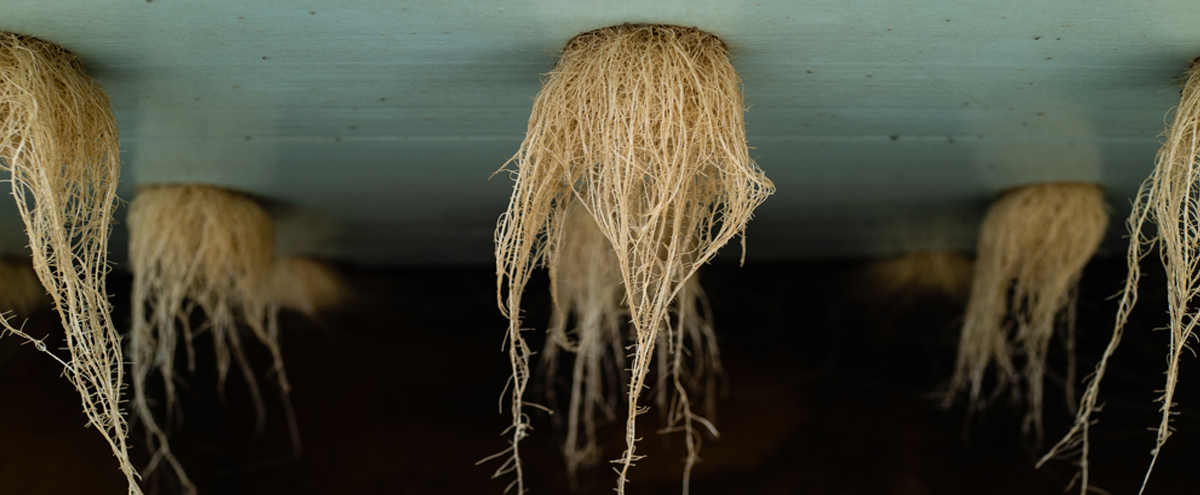

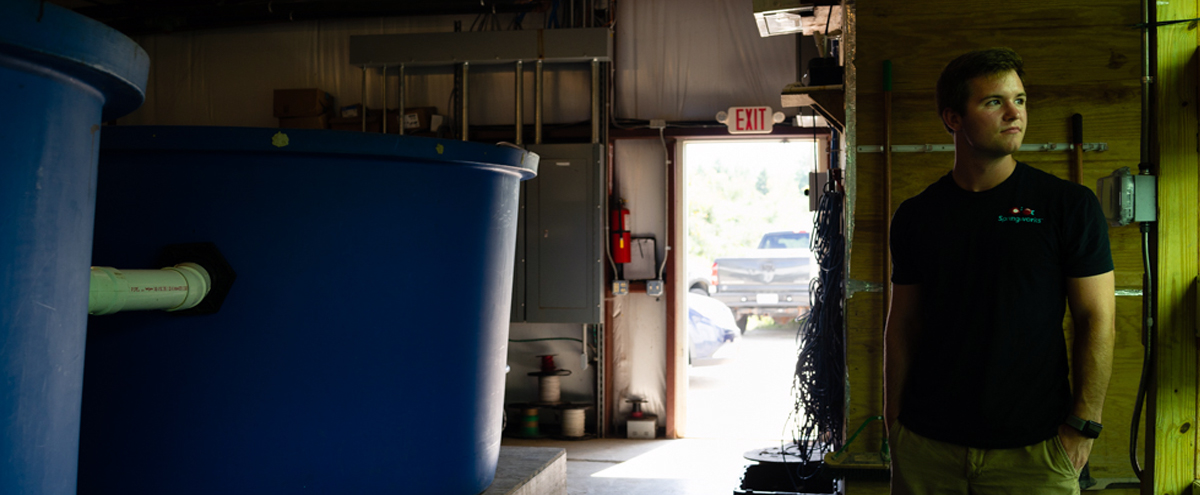
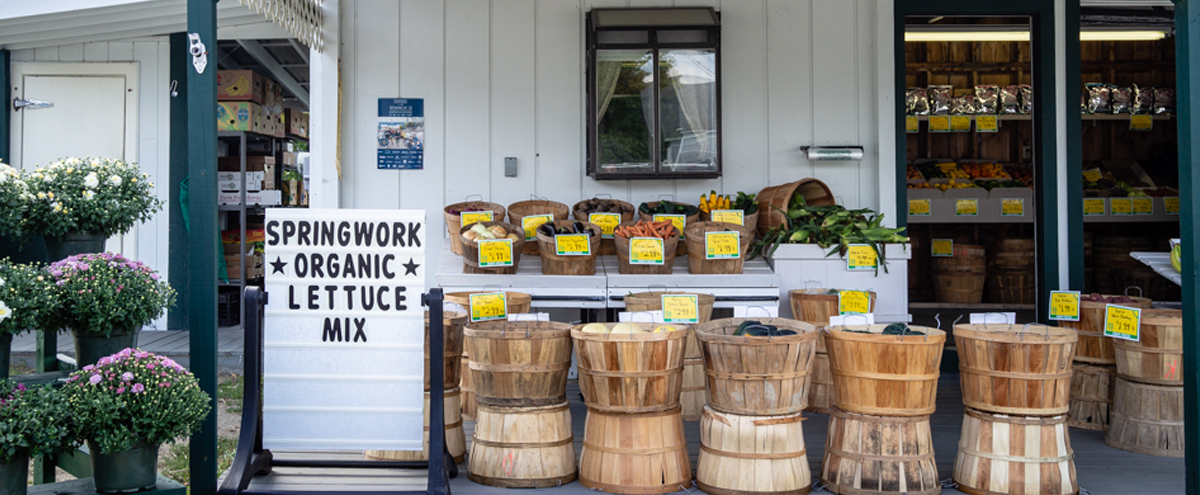
By the time he was in sixth grade, he had read Michael Pollan’s Omnivore’s Dilemma and began to understand the dangers of the widespread use of herbicides to Montana’s ecosystem—like atrazine, which can be devastating to aquatic organisms, including the fish and frogs he noticed disappearing from his beloved creek. He wanted to figure out a way to grow food that didn’t harm the environment.
Neither of his parents were gardeners, but they agreed to let him till and fence off a fifteen-square-foot plot of land for his first garden.
“My first lettuce crop was a total disaster,” Kenkel says, laughing. “Did I water it? Not sure. I know it got whacked by the sun.” But the aspiring farmer did not lose enthusiasm. “My total harvest was two cucumbers that season. I ate them whole, and I was so excited.”
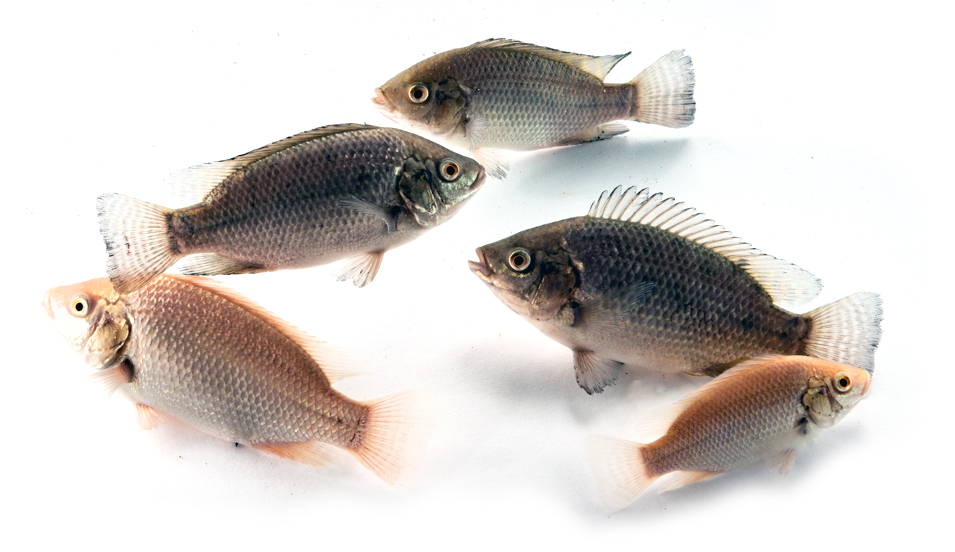 Kenkel was eager to learn from his mistakes and began to read more and more for the next season. His family acquired chickens to eat his vegetable scraps and, while happy with the improvements, he still wondered about the efficiency and continued to conduct research while pursuing other interests, including football and skiing.
Kenkel was eager to learn from his mistakes and began to read more and more for the next season. His family acquired chickens to eat his vegetable scraps and, while happy with the improvements, he still wondered about the efficiency and continued to conduct research while pursuing other interests, including football and skiing.
While Kenkel resists the label of entrepreneur, he admits to starting several businesses as a child. “One of my more successful businesses was heating different types of chocolate to dip things in.” In middle school, he learned that the black-footed ferret, a species native to neighboring Wyoming, was going extinct. Capitalizing on a large family holiday party, Kenkel sold his chocolate-dipped fruit with a side of guilt to the hundred or so guests: “I told everyone, ‘We’ve got this local part of our ecosystem that’s about to be done,’” showing pictures of the tiny ferrets. He remembers netting about $600; he donated all the proceeds to the World Wildlife Fund.
Other business ventures included composting for neighbors and selling vegetables. “What frustrated me about my garden was that there was such a small window of productivity,” he says. Much like Maine, Montana’s growing season is short and at the end of the distribution line for produce that travels thousands of miles before hitting store shelves. “Our greens were so terrible that I became a seasonal salad eater.” He knew something better could be done.
Through various Google searches, the seventh-grader discovered hydroponics, but found all the fertilizer sources to be inorganic, which brought him right back to the initial problem with the polluted creek. He continued his research, trying to find a way to make an organic hydroponic system, and eventually stumbled upon aquaponics.
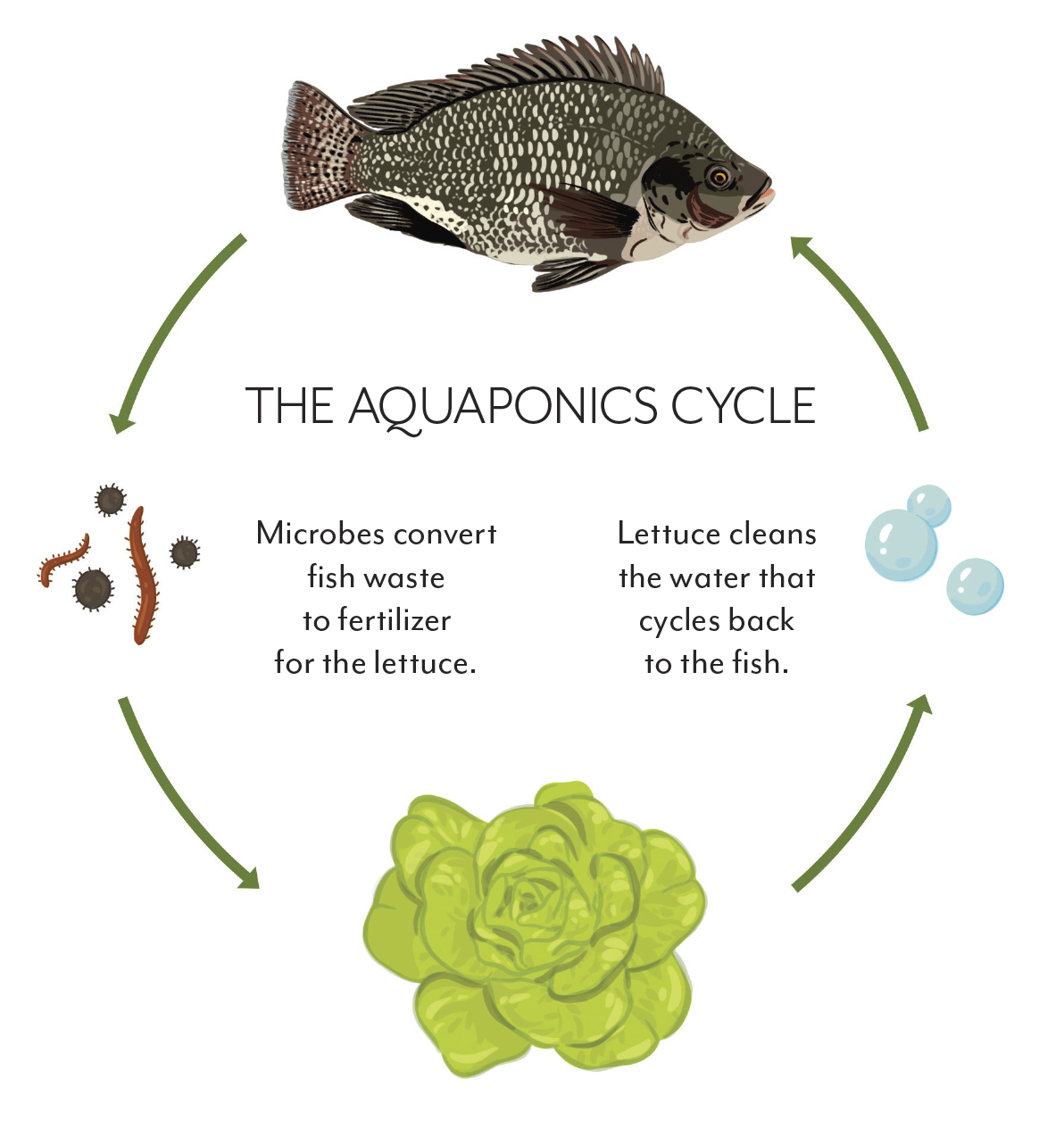
The summer before he began high school, Kenkel worked for a fencing company and saved up money to build his first aquaponics system, which he made over a twenty-gallon fish tank with five goldfish. “There are still fish from the first system alive and kicking in Montana,” he says.
“Goldfish are a lot smarter than people give them credit for. They recognized my face, as opposed to other people. They’d come up to the surface to be fed when I walked into the room.”
Kenkel was able to grow lettuce, but he wasn’t satisfied with the results. “It was stringy. I grew it in a closet, and I didn’t know yet that lettuce needs turbulence [from wind or fans] to strengthen up the stems.”
His father cleared out some workshop space in the garage and let his son build a second system, still using the same goldfish, but this time in a horse trough. He continued to refine the system over the next few years. “I’m very glad, growing up where I did, that Google existed. I was always reading forums. A lot of it was Australian, so I really learned the metric system.” In high school, Kenkel moved the operation to an outdoor three hundred-square-foot greenhouse, where he was able to grow a variety of vegetables to feed his family and sell to neighbors and a few restaurants.
In the fall of his senior year of high school, Bowdoin recruited Kenkel to play football. “I visited Bowdoin and loved it and the surrounding area,” he remembers of his first visit to New England. “I could really picture myself there for the next four years.”
After deciding to attend Bowdoin, while still in high school, Kenkel sustained a severe concussion that forced him to take off the second half of his senior year and to take a gap year before college to recover. Finding limited help within Montana for the treatment of long-term concussions, Kenkel participated in a study in Texas, but still struggled. He and his family then met with a neurologist at the Sports Concussion Clinic at the MassGeneral Hospital for Children, which had more progressive methods. The Kenkel family packed their bags, left Trevor’s greenhouse in the hands of their neighbor, and relocated to Massachusetts so Trevor could seek daily medical care. His parents and younger sister still live there.
He reflects on his time at MassGeneral with gratitude. “Up until I got there, it was just a wait-and-see approach. Just rest. Don’t do anything. It was killer for me. I found the lack of intellectual material to chew through really tough, because you are going through days just not learning anything.” With eye exercises and various other therapies, Kenkel worked himself up to reading fifteen minutes per day and, after about a year, fully recovered.
It was during his healing that Kenkel thought up the idea for Springworks. With advice from various family members, Kenkel developed a business plan and started pitching the idea to potential investors. “What always interests me,” says Kenkel, “is the intersection of science and research applied to business. It’s why I love studying econ, in addition to bio.” Kenkel’s vision in creating Springworks was for a sustainable and economical solution to organic farming.
After receiving financial backing from angel investors, Kenkel purchased the old farm in Lisbon and started construction on the greenhouse the summer before matriculating at Bowdoin. I ask him about the balance between the farm and college and Kenkel chuckles. “I didn’t sleep much that first year,” he says.
While he tries to keep his college life and work life separate, Kenkel deeply values what he learns in both worlds. “My econ classes help to provide more statistical rigor and expand my worldview in economics and modeling, and bio helps me uncover areas of the system that I didn’t know a lot about or hadn’t considered at all.”
Two of his favorite classes—Introduction to the Study of Religion and Plant Ecophysiology—speak to Kenkel’s inherent love of learning and appreciation of liberal arts. “It’s about the passion the professors bring to the work,” he says. Kenkel does research for Professor of Biology Barry Logan, who has spent time working with him at the farm.
Professor Logan remembers Kenkel approaching him near the start of the semester to talk about his keen interest in plants: “It became clear Trevor was not a typical undergraduate. At the time when we met, he and his operation were growing a quarter of a million heads of lettuce a year.”
Logan and Kenkel have worked together inside and outside of class on independent research, combining Logan’s interests in natural populations and fundamental biology with Kenkel’s interests in sustainable, organic production. “In the classroom, he’s a collaborator and works really hard to create an extraordinary balance between classes and Springworks,” said Logan, who has taken several of his classes to visit Springworks so Kenkel can show students how the system functions. “They get a first-hand look at it,” says Logan, “and then we bring some of the produce back to my house and cook a meal together.”
“It became clear Trevor was not a typical undergraduate. At the time when we met, he and his operation were growing a quarter of a million heads of lettuce a year.”
——Professor of Biology Barry Logan
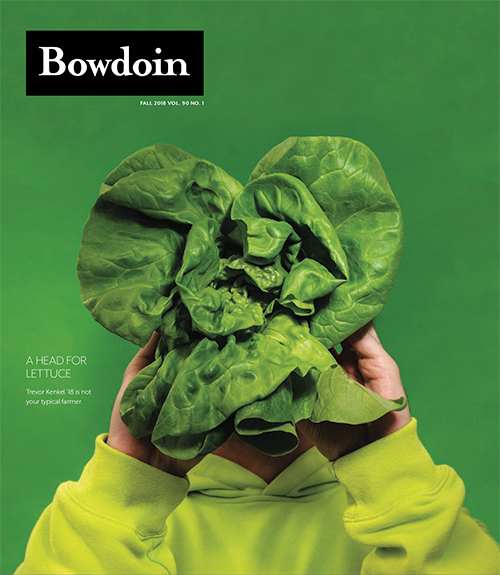
This story first appeared in the Fall 2018 issue of Bowdoin Magazine. Manage your subscription and see other stories here.
Tasha Graff ’07 is a poet and essayist and teaches English at South Portland High School in South Portland, Maine. Read more of her work at tashagraff.com.
Heather Perry’s photos can be found in National Geographic, Smithsonian, The New York Times, and many other publications. She’s on Instagram at @heathfish.
The title of this story is from a poem by the late Russell Libby ’78, longtime director of the Maine Organic Farmer’s and Gardener’s Association, and one of the nation’s leading advocates for organic farming.